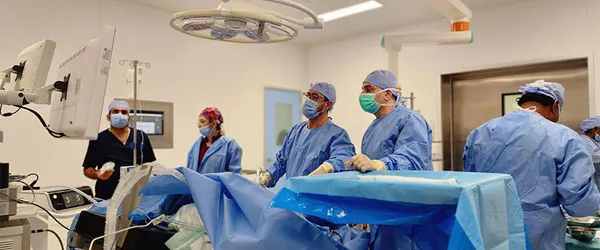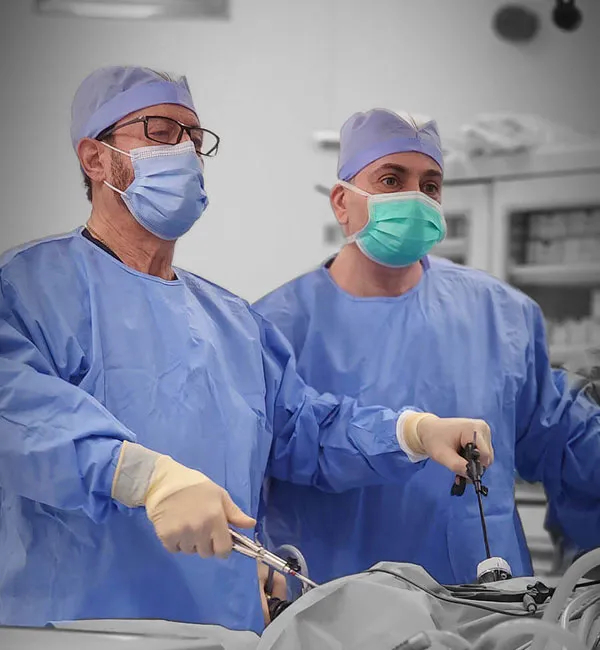Al Taie Center: Dubai & Abu Dhabi’s Premier Weight Loss Surgery Destination
Welcome to the definitive resource on weight loss surgery in the UAE. Al Taie Center, serving Dubai and Abu Dhabi, is renowned for its comprehensive, patient-centered bariatric care and state-of-the-art facilities. Led by Dr. Abdulsalam Al Taie, a highly respected bariatric surgeon in the UAE, the center combines advanced surgical techniques with a multidisciplinary approach to help patients achieve durable weight loss and improved health. This guide highlights the major weight loss procedures offered at Al Taie Center and explains why the center is a leading choice for residents of Dubai and Abu Dhabi seeking safe, effective, and personalized weight loss solutions.
Service 1: Gastric Sleeve Surgery (Sleeve Gastrectomy) What it is
- A restrictive bariatric procedure that reduces the stomach size by about 60-70%, limiting food intake and influencing hunger hormones. Performed laparoscopically in most cases, it’s a leading choice for many patients seeking substantial weight loss with a relatively straightforward recovery.
Procedure details
- Laparoscopic approach with stapled sleeve formation after removing a large portion of the stomach.
- Permanent reduction in stomach volume; ghrelin (the hunger hormone) levels often decrease, aiding appetite control.
- Duration typically several hours, with anesthesia and postoperative monitoring.
Benefits
- Substantial, sustained weight loss for most patients (often 50-70% of excess weight over 12-18 months in many cases).
- Improvements or resolution of obesity-related conditions (e.g., type 2 diabetes, hypertension, sleep apnea).
- Fewer complications than more extensive malabsorptive procedures for many patients.
- Reversibility concerns: not reversible in the same way as banding; the anatomy is permanently altered.
Candidate criteria
- BMI generally in the 30-40+ range with obesity-related comorbidities, or BMI 40+ without significant comorbidities, depending on risk assessment.
- Willingness to adopt long-term lifestyle changes (diet, physical activity, follow-up).
- No contraindicating medical conditions; healthy psychological evaluation as part of a multidisciplinary assessment.
Recovery process
- Hospital stay often 1-2 days; gradual return to normal activities within 2-4 weeks.
- Gradual dietary progression from liquids to soft foods, then to regular foods under supervision.
- Regular follow-up with the Bariatric Team to monitor weight loss, nutrition, and vitamins.
Why choose Al Taie Center for Gastric Sleeve
- Access to a multidisciplinary team including nutritionists, psychologists, and dedicated post-op care—ensuring comprehensive care.
- Dr. Abdulsalam Al Taie’s expertise and a track record of safe, effective sleeve procedures in the UAE.
- Tailored aftercare and nutrition plans designed for sustained weight loss and health improvements.
- Dubai and Abu Dhabi offer access with world-class facilities and patient-centered service.
References and sources for further reading on the gastric sleeve
- Mayo Clinic: Gastric sleeve surgery overview.
- NHS: Gastric sleeve (sleeve gastrectomy) information.
- Cleveland Clinic: Gastric sleeve surgery overview.
- NIDDK: Bariatric surgery overview and considerations.
- ASMBS patient resources and overview (general bariatric surgery guidance).
Service 2: Gastric Bypass Surgery (Roux-en-Y Gastric Bypass) What it is
- A malabsorptive and restrictive weight loss surgery that creates a small stomach pouch and reroutes the small intestine, reducing food intake and nutrient absorption.
Procedure details
- Laparoscopic creation of a small gastric pouch followed by a Roux-en-Y intestinal reconstruction.
- Alters digestion and absorption to promote weight loss.
- Average hospital stay and recovery timelines vary by patient, but many resume light activities within a week and return to normal routines after several weeks.
Benefits
- Substantial and durable weight loss for many patients.
- High rates of improvement or resolution of obesity-related comorbidities (diabetes, hypertension, sleep apnea).
Candidate criteria
- BMI thresholds typically higher (often 40+ or 35+ with serious comorbidities), with clear commitment to long-term lifestyle changes.
- Comprehensive medical evaluation and psychological assessment.
Recovery process
- Postoperative diet progression from liquids to soft foods, then solid foods under supervision.
- Regular follow-up to monitor weight trajectory, nutrition, and micronutrient status.
Why choose Al Taie Center for Gastric Bypass
- Expertise in complex reconstructions and revisional options if needed.
- Emphasis on safety, minimally invasive techniques, and meticulous aftercare.
- Access to Dr. Abdulsalam Al Taie, with extensive UAE experience in transformative bariatric procedures.
References and sources for further reading on gastric bypass
- Mayo Clinic: Gastric bypass overview.
- ASMBS: Types of bariatric procedures and patient information.
- NHS: Information on gastric bypass.
Service 3: Endoscopic Sleeve Gastroplasty (ESG) What it is
- A minimally invasive, endoscopic weight loss procedure that reduces stomach volume without surgical incisions, using specialized endoscopic suturing devices.
Procedure details
- Performed through the mouth with a flexible endoscope; sutures are placed to create a tube-like stomach that restricts intake.
- Does not involve external incisions; typically done on an outpatient basis in appropriately selected patients.
Benefits
- Lighter anesthesia and shorter recovery compared with open or laparoscopic surgery.
- Effective weight loss with a lower risk profile for eligible patients.
- Reversible in some cases; however, changes to stomach anatomy are permanent.
Candidate criteria
- BMI ranges generally lower than for surgical bypass (often 30-40 with obesity-related issues or contraindications to surgery).
- Motivated to adhere to lifestyle changes and follow-up care.
Recovery process
- Short hospital stay or outpatient procedure; resume light activities quickly.
- Gradual diet progression under clinician guidance with nutritional support.
Why choose Al Taie Center for ESG
- Access to highly trained endoscopic bariatric specialists.
- Cutting-edge endoscopic techniques and careful patient selection.
- Full continuum of care from initial assessment to post-procedure lifestyle coaching.
References and sources for ESG
- ASMBS/ASGE resources on ESG.
- Mayo Clinic: ESG information (where available) and condition context. (Note: ESG references are commonly covered by gastroenterology societies; consult updated patient information pages for local availability.)
- ASGE patient-focused ESG information
Service 4: Gastric Banding (Adjustable Gastric Band) What it is
- An adjustable silicone band is placed around the upper stomach to create a small pouch, slowing digestion and promoting fullness.
Procedure details
- Laparoscopic placement of an adjustable gastric band around the upper stomach; the band can be tightened or loosened via a subcutaneous access port.
Benefits
- Reversible and adjustable; potential for gradual weight loss with adjustable restriction.
- Lower risk of major malabsorption compared with some bypass procedures.
Candidate criteria
- Patients seeking a reversible option or those with specific medical considerations making other procedures less suitable.
- Commitment to long-term follow-up for band adjustment, nutrition, and potential removal.
Recovery process
- Short hospital stay; activity typically resumes quickly.
- Regular adjustments of the band and nutritional counseling are essential.
Why choose Al Taie Center for Gastric Banding
- Multidisciplinary support for band adjustments and complication management.
- Experienced surgical team with a focus on safety and personalized care.
- Comprehensive aftercare, including nutrition and lifestyle planning.
References and sources for gastric banding
- Mayo Clinic: Adjustable gastric banding overview.
- NHS: Gastric banding information.
- ASMBS: Overview of bariatric procedures, including banding.
Service 5: Laparoscopic Revision Bariatric Surgery: What is it?
- Reoperations to revise or convert prior bariatric procedures due to inadequate weight loss, weight regain, or complications (e.g., band slippage, ulcers, or intolerance).
Procedure details
- Laparoscopic approaches to revise, convert, or salvage prior bariatric operations, such as converting a sleeve to a Roux-en-Y gastric bypass or addressing complications from a band.
- Involves evaluating the original surgery, then selecting the safest, most effective revisional strategy.
Benefits
- Potential to restore or enhance weight loss, improve comorbidities, and reduce persistent symptoms.
- Tailored to patient history and current health status.
Candidate criteria
- Prior bariatric surgery with insufficient results or complications requiring surgical adjustment.
- Comprehensive medical and nutritional evaluation to plan revisions safely.
Recovery process
- Recovery depends on the extent of revision; may require longer follow-up, nutritional monitoring, and possible dietary adjustments.
Why choose Al Taie Center for Revision Bariatric Surgery
- Expertise in complex revisions and multi-disciplinary care.
- Thorough preoperative assessment and careful surgical planning.
- Emphasis on safety, precision, and long-term outcomes.
References and sources for revision of bariatric surgery
- ASMBS: Revision bariatric surgery guidance and considerations.
- Johns Hopkins Medicine: Revisional bariatric surgery overview.
- Cleveland Clinic: Bariatric revision and conversion options (informational overview).
Service 6: Laparoscopic Surgery for Reflux After Bariatric Surgery What it is
- Surgical management for gastroesophageal reflux disease (GERD) in patients after bariatric procedures (e.g., sleeve gastrectomy), including conversion to Roux-en-Y gastric bypass or anti-reflux procedures.
Procedure details
- Laparoscopic procedures to modify anatomy and reduce reflux symptoms, often involving conversion to a Roux-en-Y configuration.
- In some cases, alternative anti-reflux operations or revisional steps are considered based on individual anatomy and symptoms.
Benefits
- Improved reflux control and quality of life.
- Potentially better long-term heartburn management when lifestyle and medical therapy are insufficient.
Candidate criteria
- Documented GERD after bariatric surgery with persistent symptoms despite medical therapy or lifestyle interventions.
- Comprehensive preoperative evaluation including esophagogastroduodenoscopy (EGD) and imaging as needed.
Why choose Al Taie Center for reflux surgery after bariatric procedures
- Specialized experience in the UAE with post-bariatric anatomy and tailored surgical strategies.
- Thorough evaluation, patient education, and careful postoperative follow-up.
Cited references and sources for reflux after bariatric surgery
- Johns Hopkins Medicine: Revisional strategies including conversion to RYGB for GERD.
- Cleveland Clinic: Post-bariatric GERD management and revision options.
Service 7: Laparoscopic Band Removal What it is
- Removal of an adjustable gastric band due to intolerance, slip, erosion, infection, or inadequate weight loss.
Procedure details
- Laparoscopic explantation of the gastric band with or without conversion to another bariatric procedure, depending on patient goals.
Benefits
- Relief from band-related complications and symptoms; opportunity for a subsequent weight loss procedure if indicated.
Candidate criteria
- Band-related complications or poor weight loss response with preference for alternative options.
Recovery process
- Recovery is usually quick, with activity resuming within days to two weeks; follow-up guidance for dietary transitions and monitoring.
Why choose Al Taie Center for Band Removal
- Expertise in band-related issues and conversion options if needed.
- Comprehensive post-removal support, nutrition, and lifestyle coaching.
Cited references and sources for band removal
- ASMBS: Band-related information and revision options.
- Mayo Clinic: Adjustable gastric banding overview and considerations.
Service 8: Mini Gastric Bypass (One-Anastomosis Gastric Bypass, OAGB) What it is
- A streamlined bariatric procedure using a single anastomosis to create a long, narrow stomach pouch and reroute a portion of the intestine.
Procedure details
- A laparoscopic single-anastomosis gastric bypass, typically shorter than traditional Roux-en-Y in operative time.
Benefits
- Potential for rapid weight loss and nutrient absorption changes, with a relatively straightforward operative process.
- Some patients experience excellent weight loss and comorbidity improvements.
Candidate criteria













